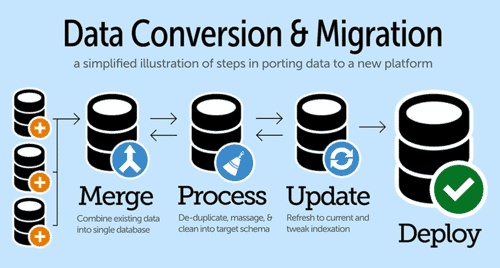
DATA CONVERSION AND DATA CLEANING
Data conversion refers to the process of transforming data from one format or structure into another.
This is often necessary when transferring data between different systems, applications, or platforms that may
use different formats or standards.
Our team also has expertise in cleaning the PMS and Procurement data without disturbing the history of the jobs and components.
We maintain high quality of the extracted data and compare it with all available Documentation/Manuals before inserting it in the CMMS software.
Data conversion & Data cleaning is essential for ensuring the quality and reliability of data used for decision-making, analysis, and machine learning applications. It improves the accuracy and effectiveness of data-driven processes and helps organizations derive meaningful insights from their data.
Salient Features
Handling Missing Data: Data cleaning involves identifying and dealing with missing values in the dataset. This can include imputing missing values using statistical methods (e.g., mean, median, mode imputation) or removing rows or columns with significant missing data.
Removing Duplicates: Identifying and eliminating duplicate records or entries within the dataset. This helps in maintaining data consistency and accuracy, especially in datasets derived from multiple sources.
Correcting Inaccurate Data: Detecting and correcting data that is inaccurate, inconsistent, or erroneous. This may involve validating data against predefined rules or known standards and making necessary corrections.
Standardizing Data: Ensuring consistency in data formats, units of measurement, or categorical values across the dataset. This can involve converting text to a consistent case (e.g., lowercase), standardizing date formats, or normalizing numerical values.
Handling Outliers: Identifying and addressing outliers or anomalies in the data that can skew analysis results. This may involve statistical methods or domain knowledge to determine whether outliers should be corrected, removed, or kept depending on their impact on the analysis.
Data Validation: Verifying the accuracy and integrity of data through validation checks. This ensures that data meets predefined quality criteria and conforms to expected patterns or ranges.
Data Transformation: Transforming data to enhance its quality or suitability for specific analyses or applications. This can include converting data types, deriving new variables or features, or aggregating data at different levels of granularity.